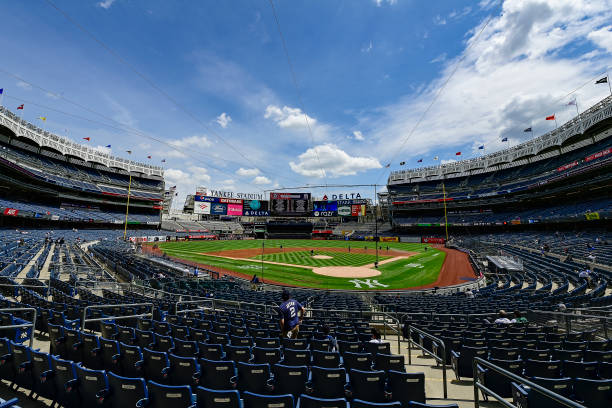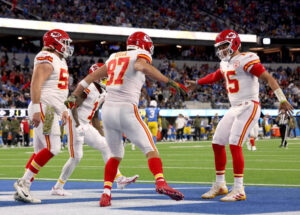Major League Baseball games have increasingly gotten longer and longer in recent years. The average length of an MLB game today is about three hours and eight minutes. Forty years ago in 1981, the average length of an MLB game was about two hours thirty-three minutes. In other words, baseball games have lengthened to over thirty-five minutes on average in the last four decades. What could possibly explain such a jump in time it takes to play an MLB game? Well, there are a lot of factors including but not limited to the time between pitches, number of foul balls, check swings, pitching changes, and general plate approach of most MLB hitters.
All of these components have combined to lengthen MLB games to unsustainable levels. Despite their average of just over three hours in length, many baseball games today approach four hours regularly. On opening day 2021, Kansas City and Texas played a game that lasted four hours and twenty-six minutes. And the game did not even go into extra innings! Clearly, Major League Baseball has a length problem with regards to their games, and the only way to fix that is to implement rules and strategies that speed up the games. So here are a few proposals to do just that.
Implement A Pitch Clock
Major League Baseball could do a service to all fans by instituting a pitch clock that pitchers must abide by. The National Basketball Association (NBA) implemented something similar called a shot clock back in 1954. Previously, NBA games consisted of low-scoring affairs of keep away, often resulting in fan apathy towards the game. The NBA knew they needed to implement something to speed up the game and create more of an incentive to score. So, they introduced the shot clock, and nearly every season since, basketball games have increased in average points scored. Baseball should follow basketball’s lead and institute a shot clock of sorts for pitchers. It would simply be a pitch clock that limits pitchers to perhaps fifteen seconds per pitch. This would effectively eliminate the long-drawn-out wind-ups of pitchers looking to finesse their way to success.
As it stands today, the average time between pitches in MLB is just over twenty-five seconds. Considering baseball games last nine innings and require three outs per inning, this average is downright ridiculous. Pitchers are given as much time as they want to meander around the mound and try to throw off the timing of their opponents. While this is a completely legal strategy, it only serves to greatly increase the length of an MLB game. This is not to mention many pitchers take much longer than this between pitches.
Astros reliever Pedro Baez averaged more than thirty-one seconds between pitches in 2018 while he was still with the Dodgers. So if Baez throws a twenty-pitch inning, it would take roughly twelve minutes to complete. If a comparable top and bottom of an inning take twelve minutes each, that would make every full inning around twenty-five minutes long. Multiply this over nine innings and you have an MLB game that is more than three hours long. While every inning will not be twenty pitches, MLB has seen the average pitches per inning increase to fifteen. Some innings are less than fifteen, but many are well over this number and in many cases, well over twenty. All of this proves that on pitching time alone, baseball games have been substantially lengthened.
With the implementation of a pitch clock to Major League Baseball, the penalty for violating it would be simple. For every infraction of this rule, a pitcher would have to intentionally walk whatever batter they are facing. In other words, violating the pitch clock would put a runner on first base and charge the pitcher with an earned run should that runner score. This is a fair compromise considering pitchers are the main culprit for extended MLB games at the moment.
Built into the pitch clock would be a massive incentive for pitchers to keep the pace of the game moving. If every violation meant that a runner gets on, the chances of giving up a run increase exponentially. With a good base runner, the chances of giving up a run increase even more. Essentially, a pitcher can work easier when the bases are open. And in order for the bases to stay open, the pitcher would have to abide by the pitch clock, thereby validating it as beneficial to both the pitcher and the length of the game.
Limit the Number of Fouled Off Pitches
Another main culprit to the long games that plague Major League Baseball is the fouling off of pitches. Every batter is increasingly better at fouling off pitches they do not want to hit. This means that many batters foul off five, six, or seven balls in just one at-bat. In fact, the average number of foul balls per game in 2019 was a record 53.8. There is a limit of four foul balls before a walk is issued in baseball. However, there is no limit to how many pitches a batter can foul off. This is how it is possible for a batter to see fifteen pitches in one at-bat.
This ridiculous rule means that as long as a batter can get enough bat on the ball during each pitch, they will be able to foul the ball off and stay alive. In the mid-1900s, hitters just did not foul off the kind of pitches that is now seen as regular. Hitters like Ritchie Ashburn, who were notorious for fouling off many pitches before finding one they liked, were an anomaly. Now it seems that Ashburn-type players are the average MLB player. This needs to change in order for MLB games to speed up. If MLB instituted a limit on the number of fouled-off baseballs, it would greatly speed up the game.
The rule currently is four foul balls for a walk and three strikes for an out. If a batter fouls off a ball, it counts as a strike until they reach two strikes, then it is no longer a strike and a batter can foul off as many pitches as he likes. So, baseball should mandate that after five balls fouled off, the batter is automatically out. This would eliminate the penchant of MLB players fouling off balls at an ungodly clip in order to stay alive. It would also ensure that a pitcher could never exceed twenty-four pitches in one inning. So, the thirty pitch innings that drag out a game would be a thing of the past as well. This rule would solve two problems that plague baseball and would accomplish the goal of ultimately speeding up the game in a meaningful way.
Eliminate the Check Swing
The check swing in baseball is another cause of extended at-bats, innings, and games. The fact that a batter is free to swing at a pitch and stop halfway through and have the play not be a strike is quite frankly laughable. MLB players have perfected the art of half swings that by current rules, are not considered strikes. So, every pitch that does not end up in the strike zone but does result in a half swing from the batter is currently a ball.
This only serves to extend at-bats and innings. It gives the batter more opportunities to look for a pitch they like, or as mentioned, foul off more pitches. One of the main causes of long MLB games, as it stands, is long at-bats, and MLB’s tolerance of check swings only feeds that problem. Major League Baseball should institute a policy that states all check swings are full swings and thus strikes. In other words, a batter is free to swing halfway and stop, but it will be considered a strike.
If MLB made this rule a reality, batters would no longer check-swing knowing any movement of their bat would result in a strike or an out. They would commit to swinging on a certain pitch and follow through with it. There would no longer be any half swings or uncertainty as to whether or not to swing either. Also, a rule like this would eliminate the need for most instant replays and video reviews involving the batter. If any movement of the bat in the form of a swing resulted in a strike, there would never be a need to review the batter’s actions. As a result, even more time would be saved by not having to consult with replay booth officials or other umpires on the field. This is yet another win-win rule for MLB and the length of their games.
The MLB Verdict
Everyone can probably agree that Major League Baseball games need to be shorter. How baseball gets there is another story. Some of the ideas laid out above could speed up a game that has increasingly become drawn out and lethargic. MLB could implement a pitch clock to force pitchers to speed up their delivery. Or they could institute a rule to limit the number of balls that hitters can foul off in an at-bat.
Baseball could also mandate that check swings are no longer considered balls, but strikes. All of these proposals would help to shorten MLB games and help fans appreciate baseball more than they have previously. The game is in fact one of the few that can provide epic moments such as the ending to the recent “Field of Dreams Game” in August 2021. But in order for those moments to dominate the game of baseball and not just speckle it, there needs to be a concerted effort to shorten MLB games.
Main Photo:
Embed from Getty Images







